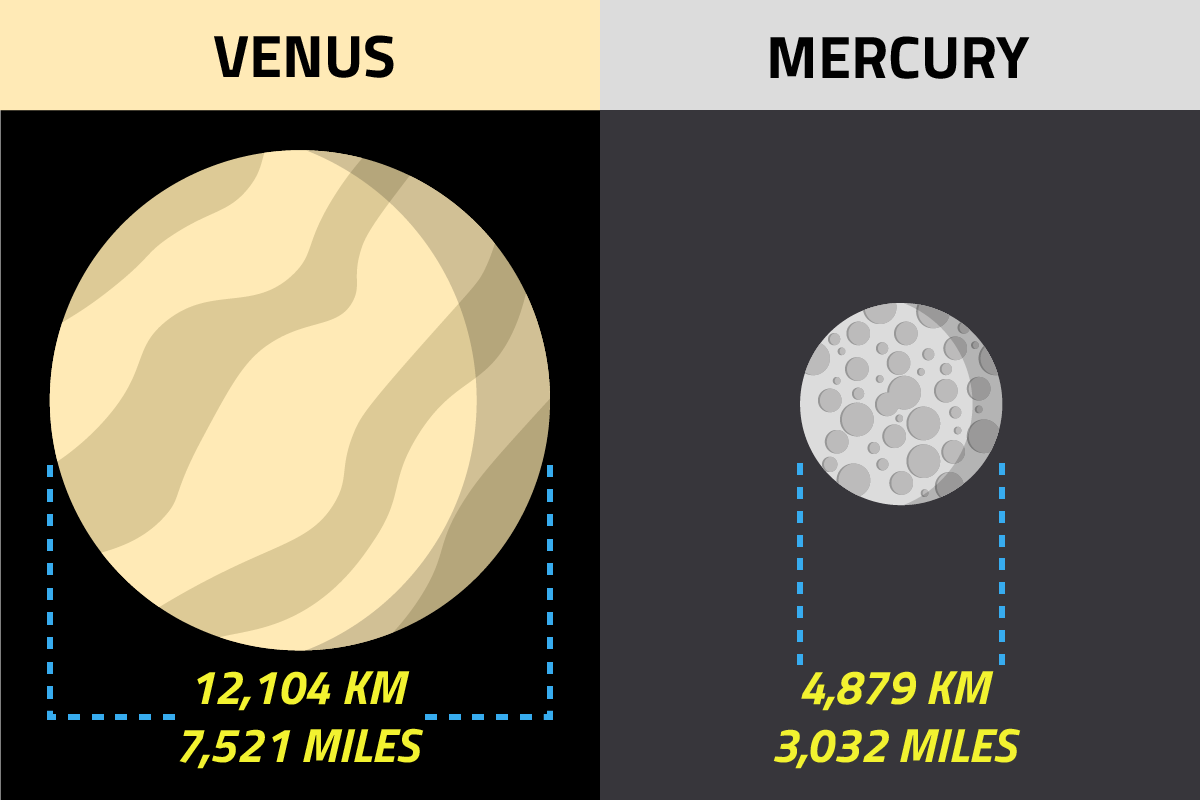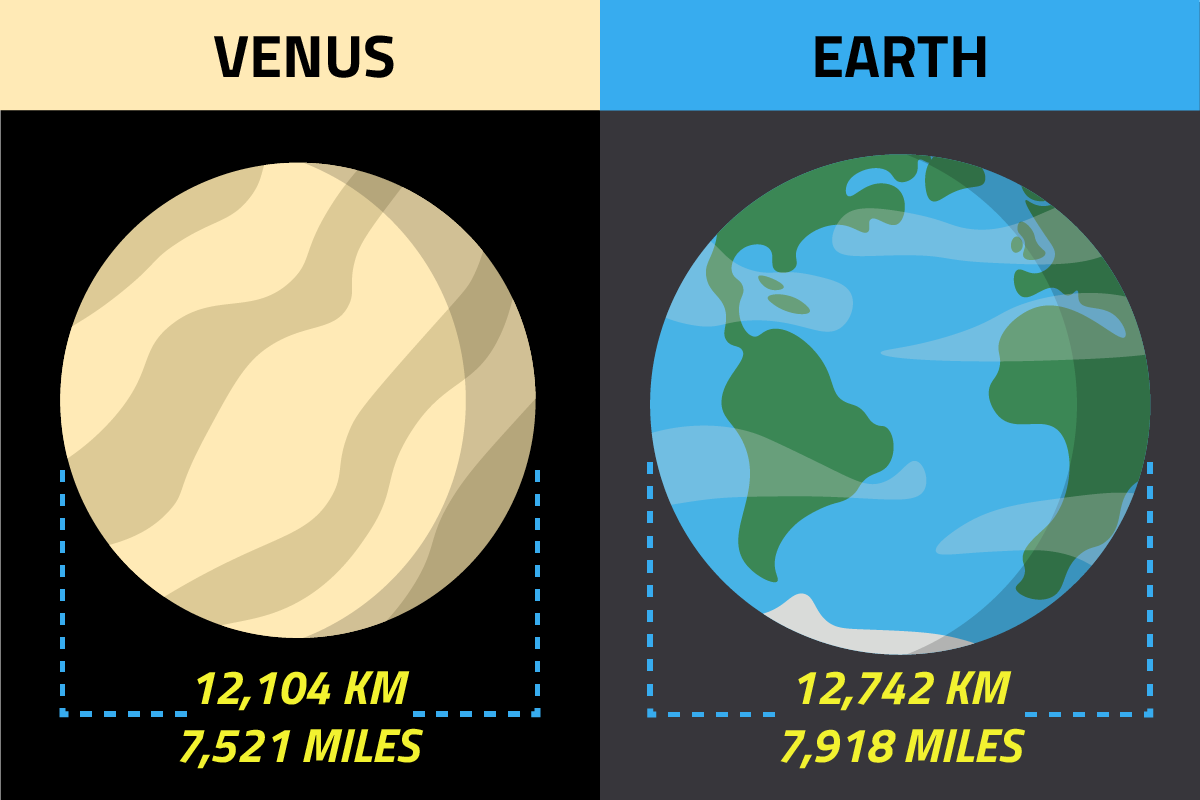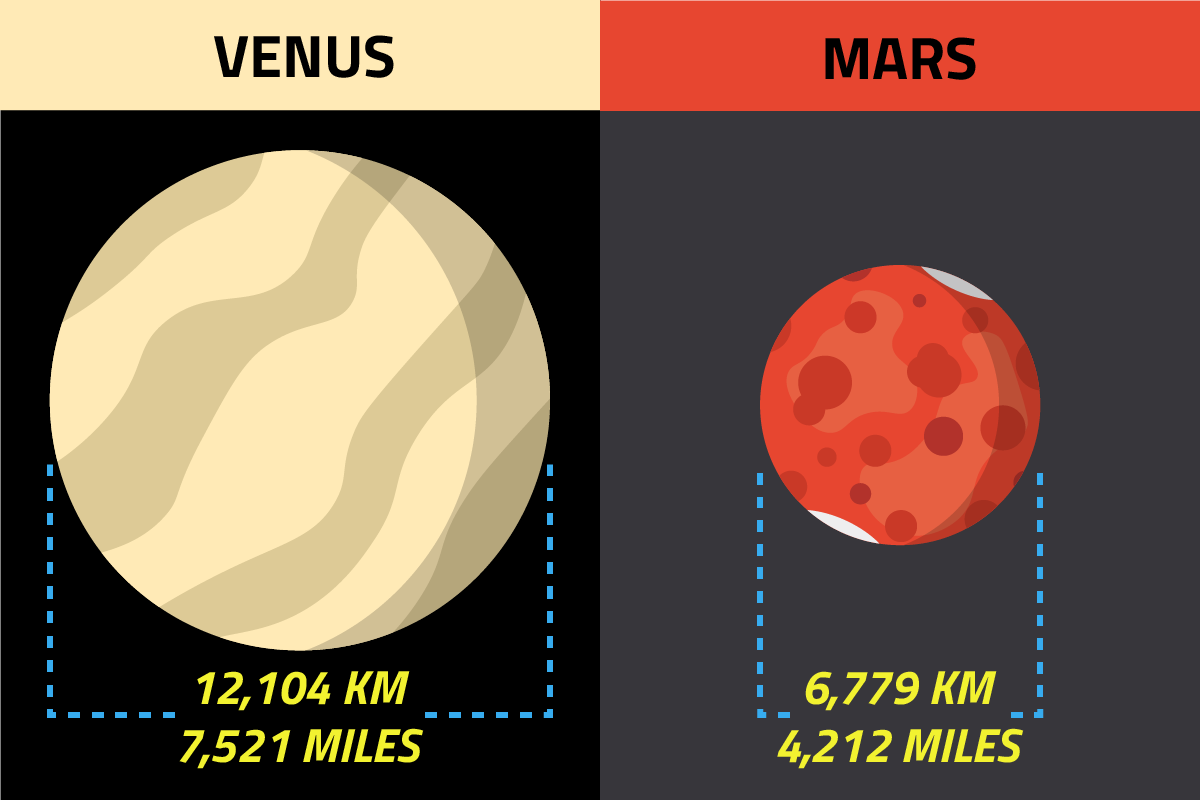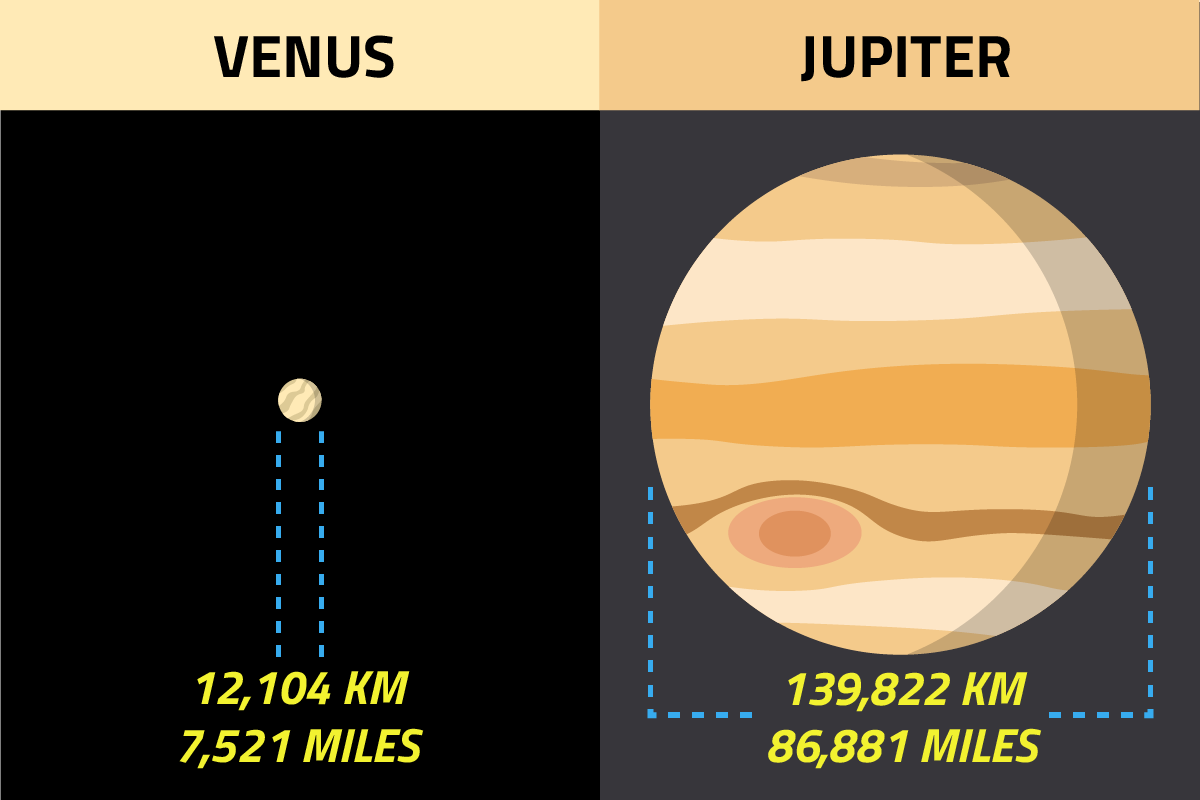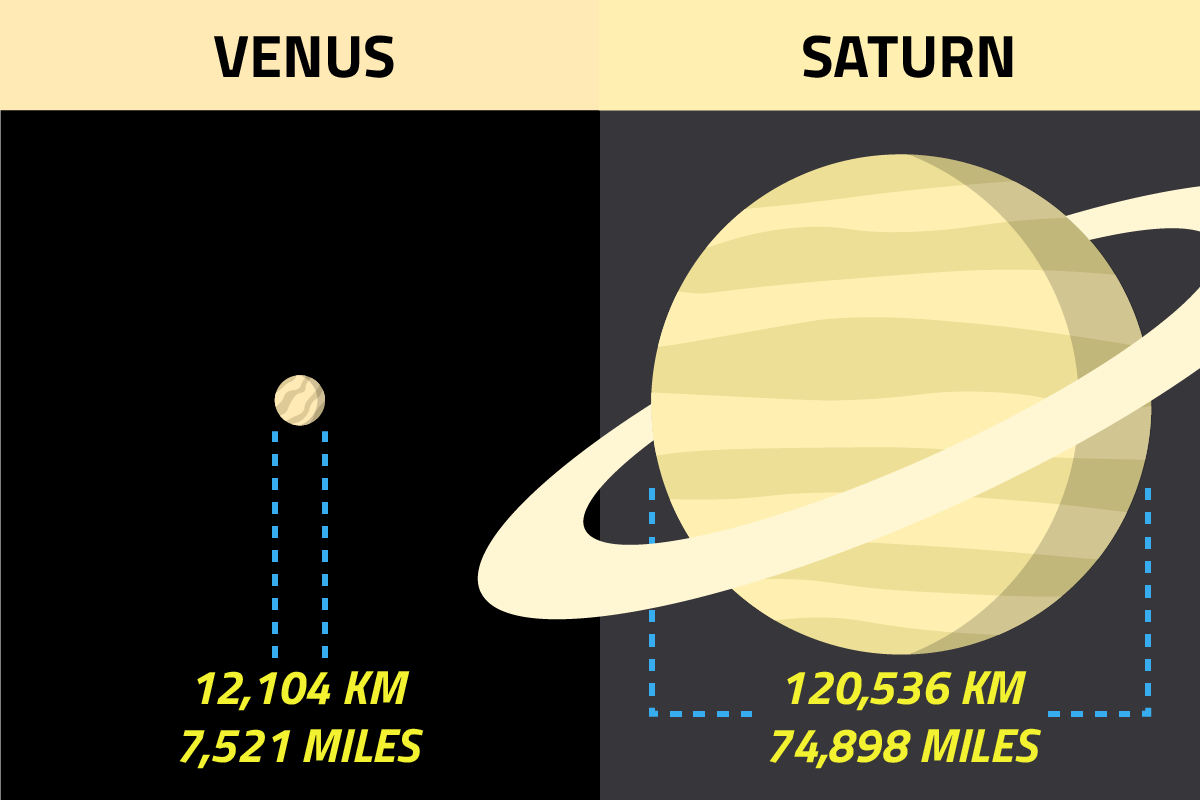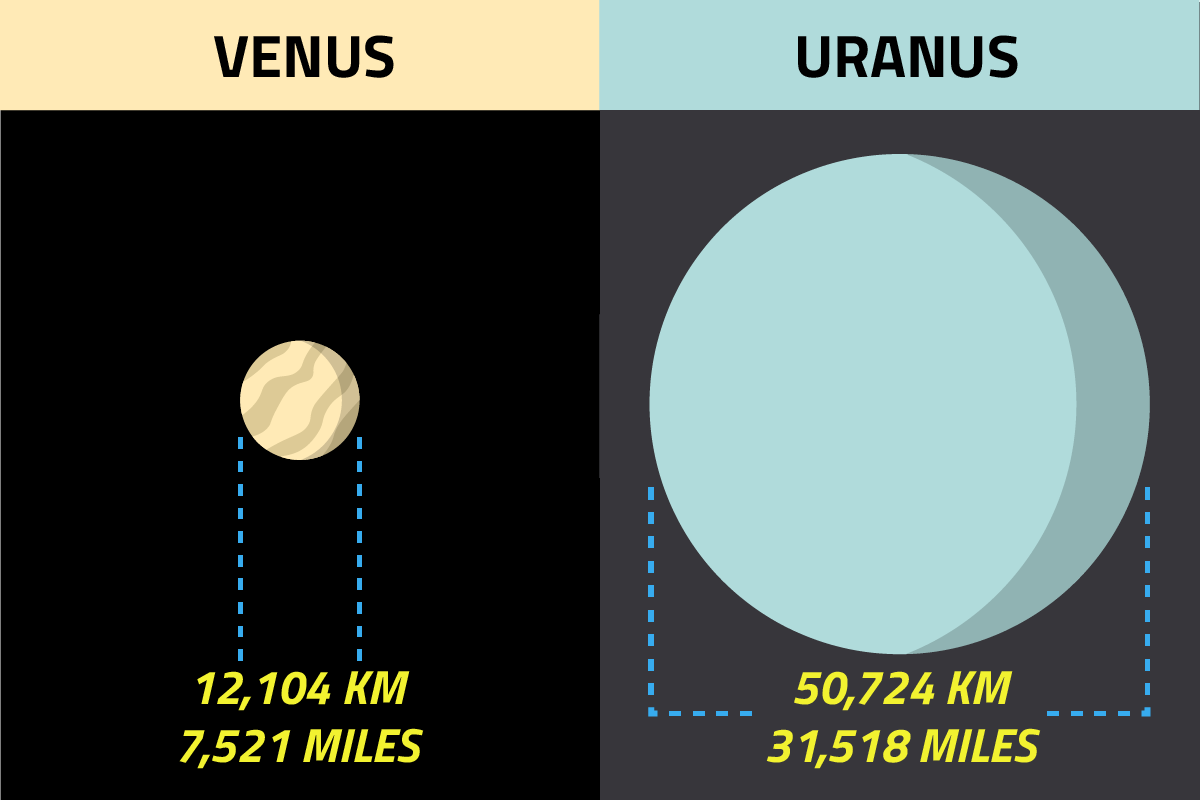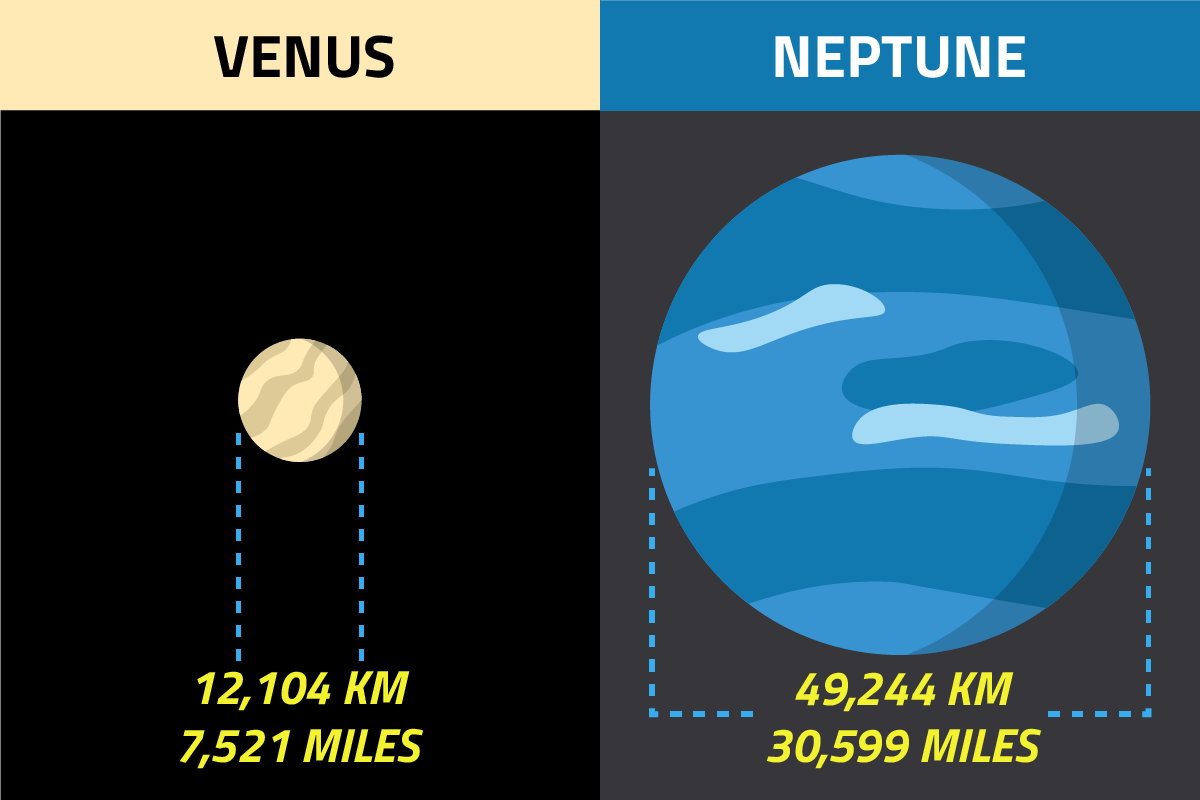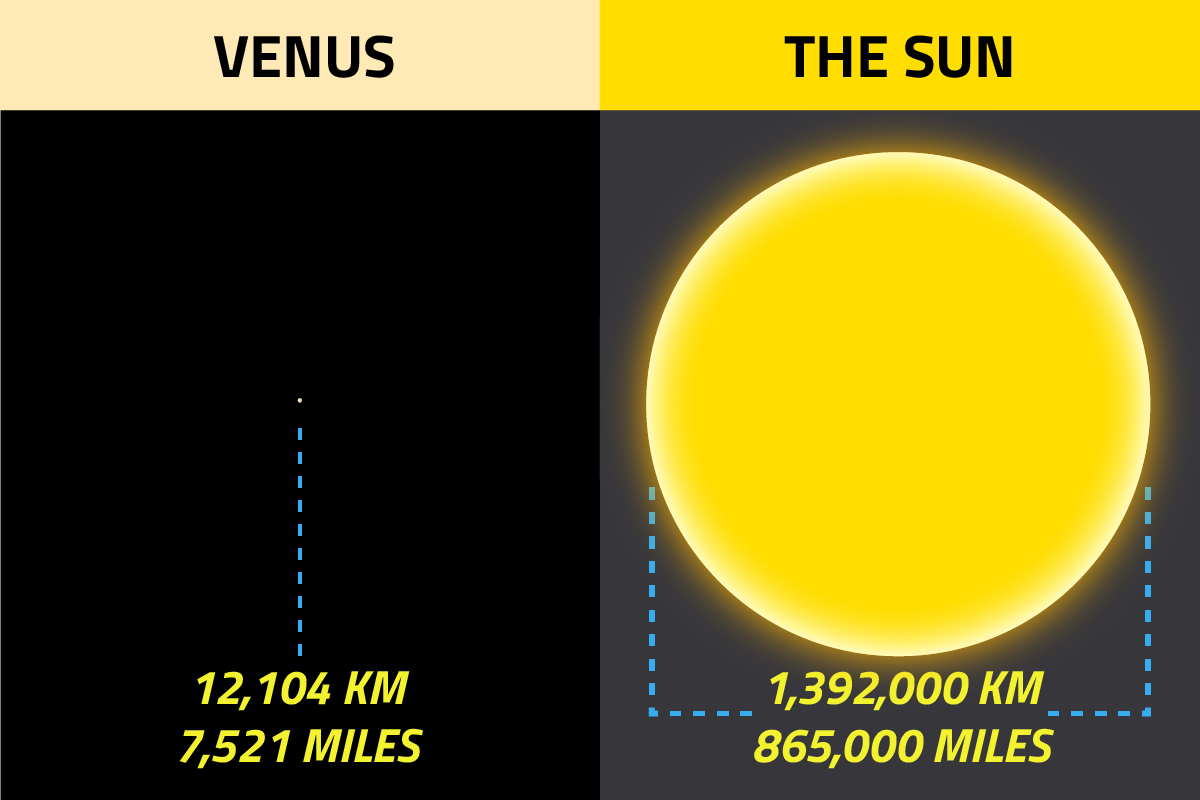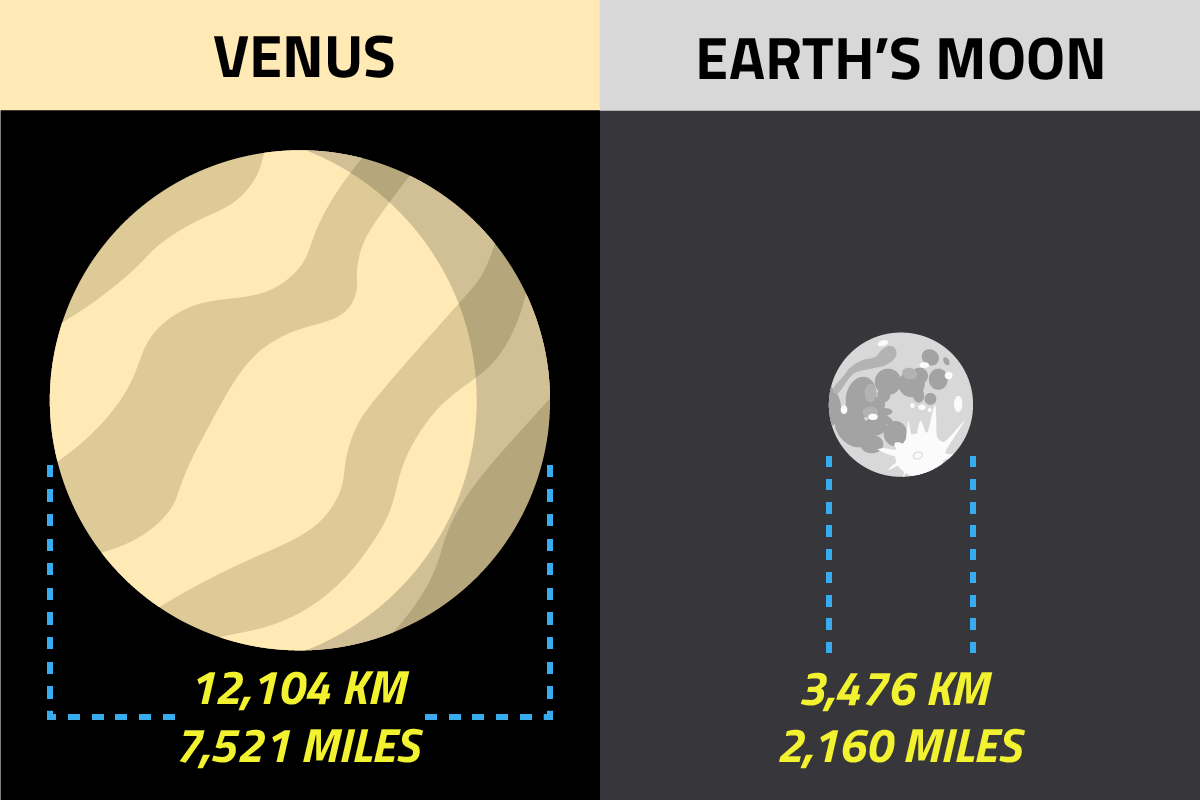Welcome to Venus
Venus is the second planet away from the Sun and the closest planet to Earth. It is the brightest object in the sky after the Sun and the Moon and can, in the right conditions, be seen during the day! At night, because it is so bright, it is also able to cast shadows! Venus is named after the Roman goddess of Love and Beauty although, if we look closer at Venus, at its poisonous atmosphere and deadly volcanic surface, we soon discover that there is nothing beautiful about the planet. The planet has a thick swirling cloud cover which never clears to reveal the surface. It is only through recent technology that we can see under the clouds and view Venus' landscape.
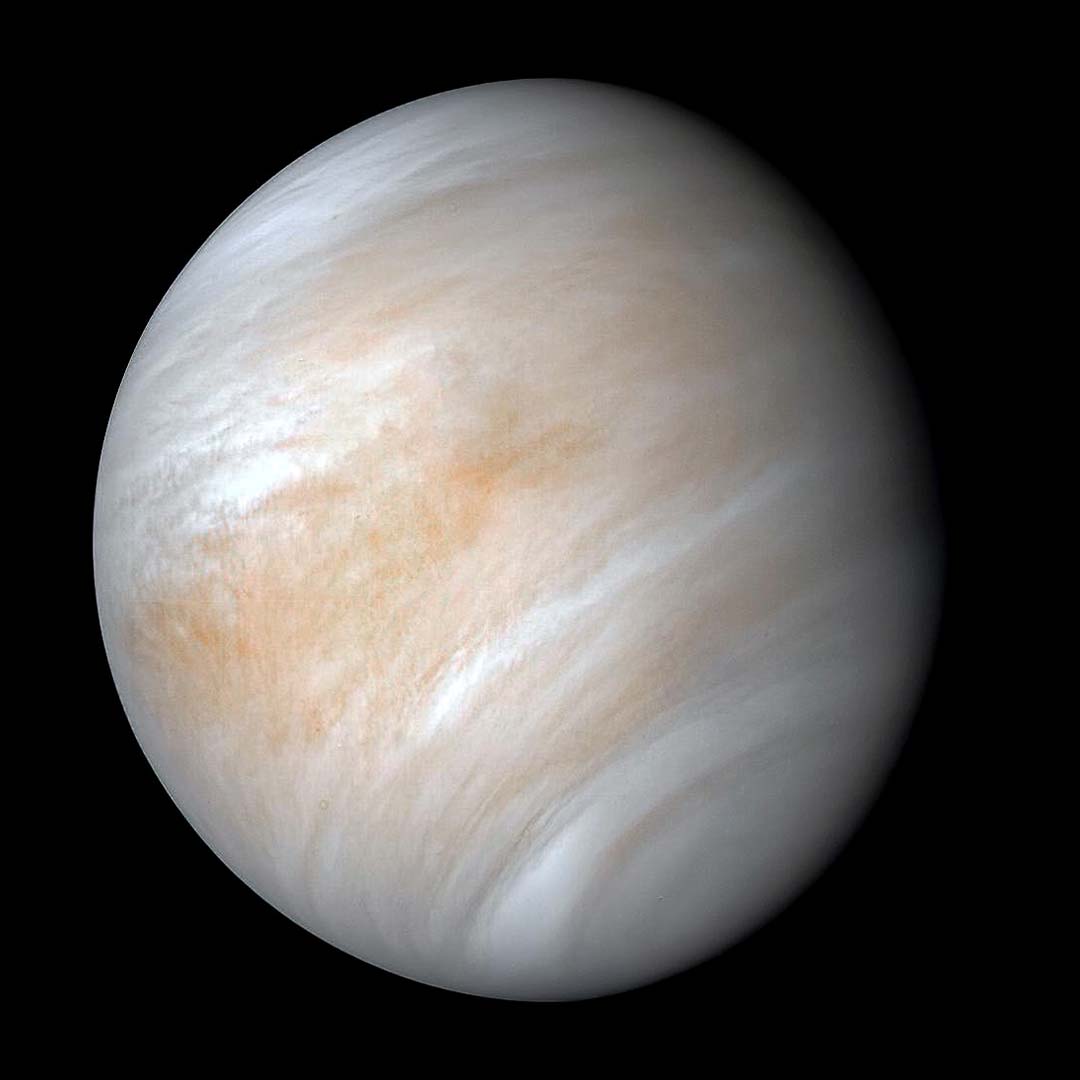 Mariner 10 image of Venus in February 1974, courtesy of NASA/JPL-Caltech
Mariner 10 image of Venus in February 1974, courtesy of NASA/JPL-Caltech
67,237,935 miles
0.72 A.U.
7,521 miles
880 °F
Venus is the second planet from the Sun. Its orbit is situated in between the orbits of Mercury and Earth.
Venus orbits the Sun at a distance of about 108 million kilometres (67 million miles) and takes 224 days to complete a full trip around it, meaning that a year on Venus is 224 days long.
Although Venus is twice away from the Sun than Mercury is, Venus is actually the hotter planet and the hottest in the solar system. This is because it has a thick atmosphere full of gases which trap heat from the Sun. Instead, the heat stays within the atmosphere and spreads out equally across the entire planet, regardless of whether its day or night time there. The typical temperature on Venus is 471 °C (880 °F), hot enough to melt lead.
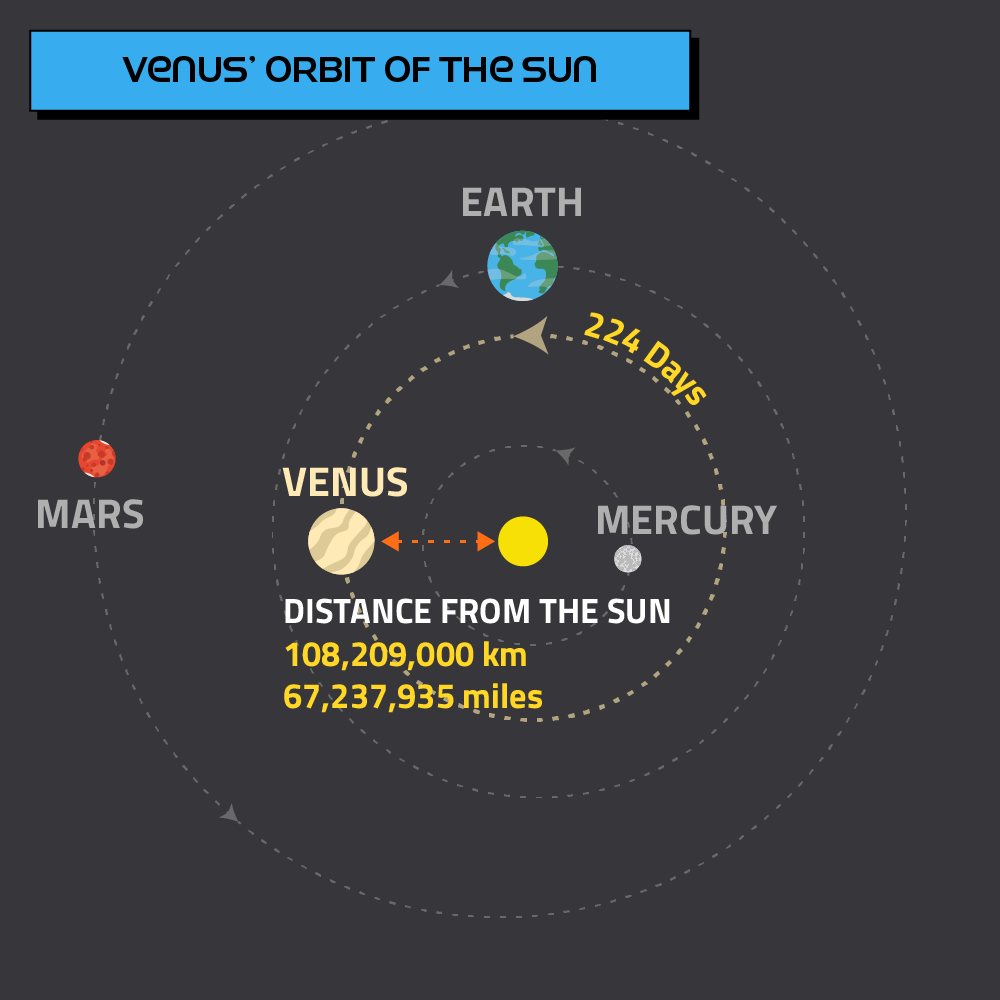
Venus has a diameter of 12,104 kilometres (7,721 miles). It is the sixth largest planet in the solar system, and is slightly smaller than its neighbour Earth. The only planets smaller than Venus are Mars (7,918 km/4,212 miles) and Mercury (4,879 km/3,032 miles).
As it is such a similar size to the Sun, and isn't really that much closer to the Sun than Earth is, scientists and astronomers in the past considered Venus to be Earth's twin.. It has only been through uncrewed space missions to Venus that the planet has proved itself to be perhaps the last place you'd ever like to visit. With its acid-filled clouds, suffocated atmosphere and unbearable temperatures, even space crafts that have landed on its surface have only been able survive for an hour or two before getting destroyed by Venus.
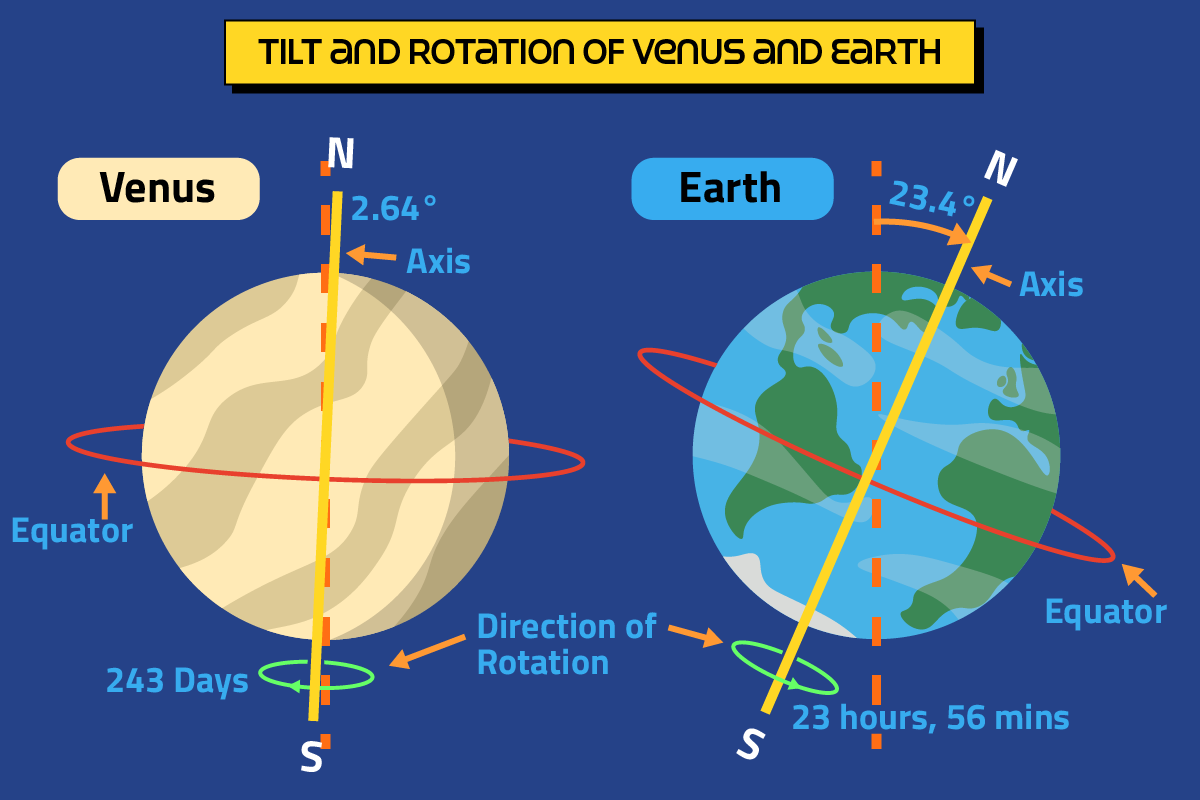
All planets spin on an axis, an imaginary line that runs through the centre of them. The length of time it takes for a planet to spin once on its axis determines the length of a day on that planet. As Earth takes around 24 hours to spin once on its axis, a day on Earth is 24 hours long. Most other planets spin fairly quickly too. Mars takes just under 25 hours to spin once, Jupiter almost 10 hours, Saturn nearly 11 hours, and Uranus and Neptune take 17 hours and 16 hours. Mercury and Venus are very different though. Mercury takes 59 DAYS to spin once on its axis. That may seem a lot, but it's nothing compared with Venus which takes 243 days!
This slow rotation of Venus is interesting because it means that a day on Venus is actually longer than its year. The 243 days it takes for Venus to spin on its axis is longer than the 224 days it takes for the planet to complete a full journey around the Sun. Imagine trying to work out how old you are if you lived on Venus!
Venus stands out from most of the other planets in another way. As well as spinning slowly, it also spins backwards! Most planets spin in an anti-clockwise direction. The two exceptions are Uranus and Venus which both spin in a clockwise direction. Scientists use the word "retrograde" to describe this kind of rotation.
The reason for Venus' slow and backwards rotation are not really understood. Quite possibly, it did once rotate in a similar way to the rest of the planets but something very large collided with it in its early existence and the impact was so great that its speed and direction of rotation was forever disturbed. Slightly less exciting but harder to explain is that it's partially tidally locked with the Sun, so doesn't really rotate. This is a bit like how the Moon orbits the Sun. Another theory is that the planet does actually spin in the correct direction, it's just upside-down! Confusing!!






